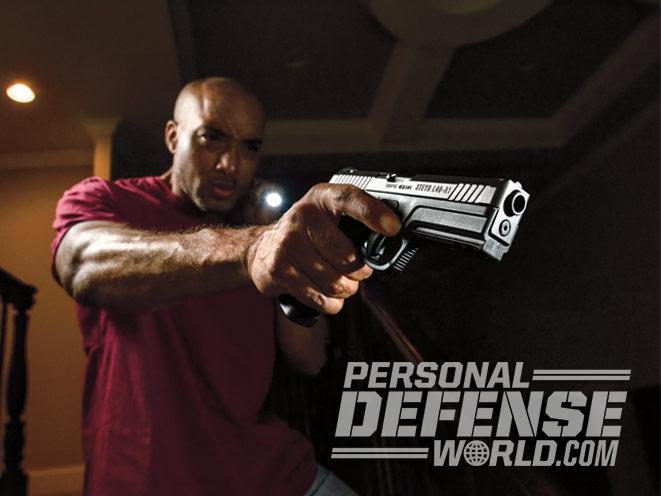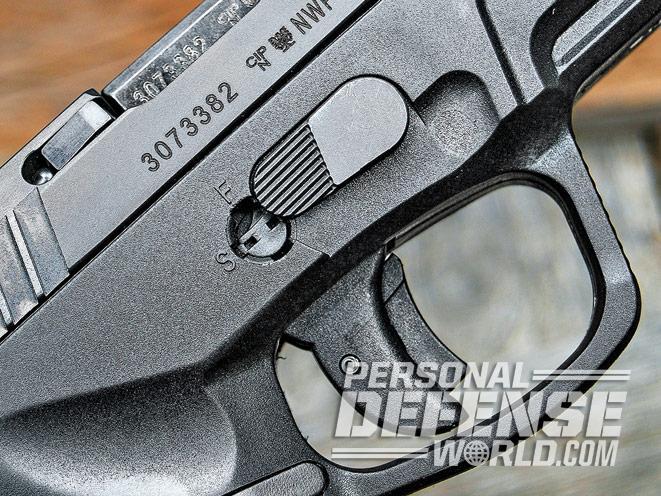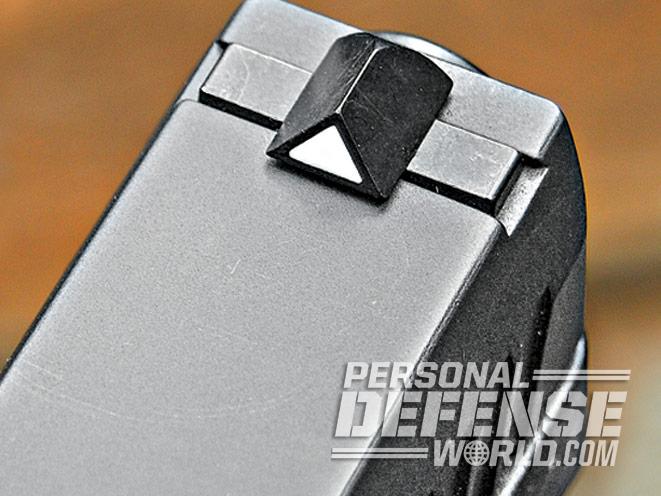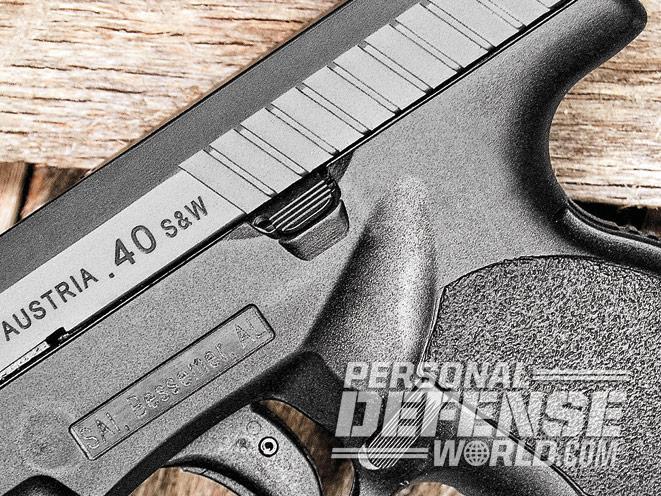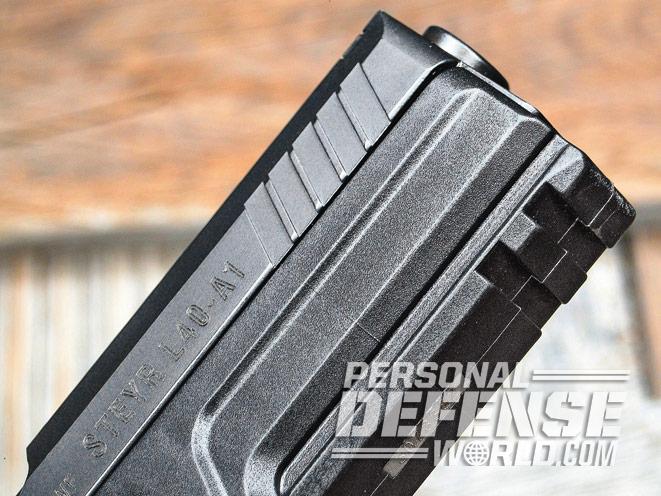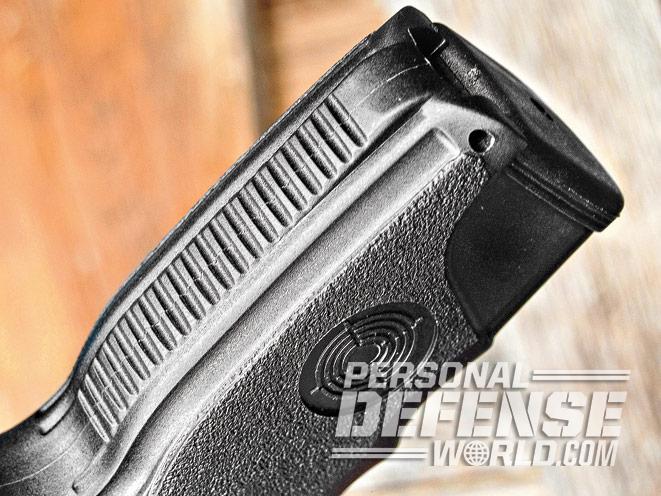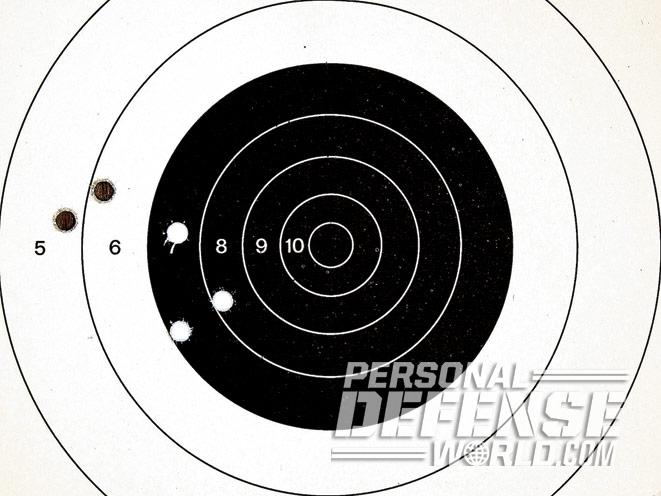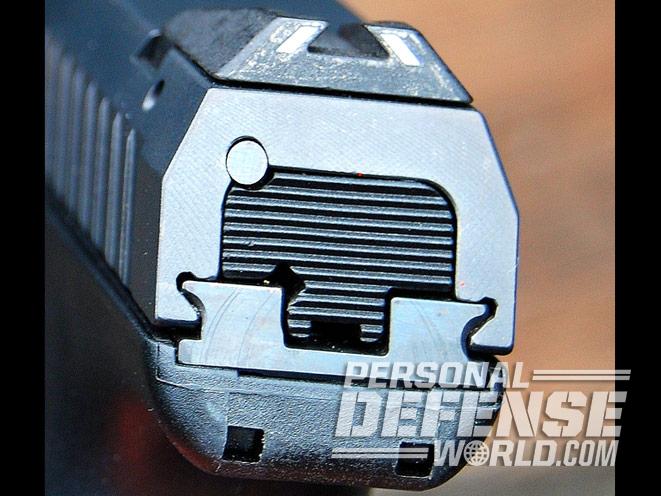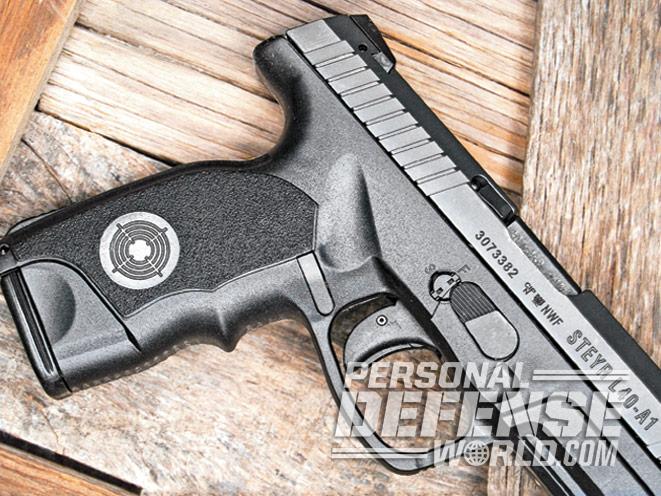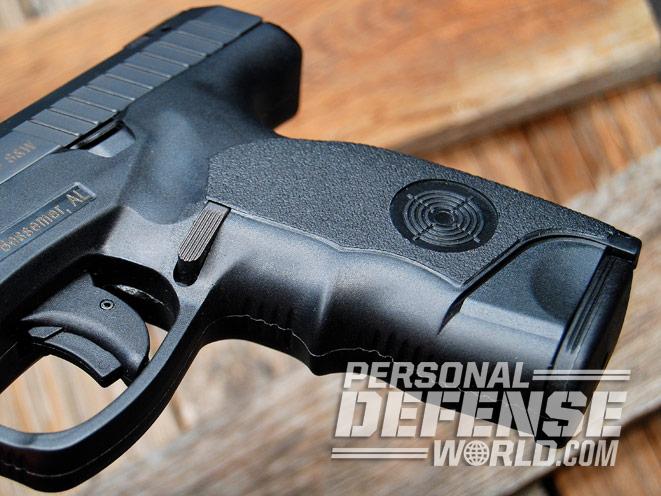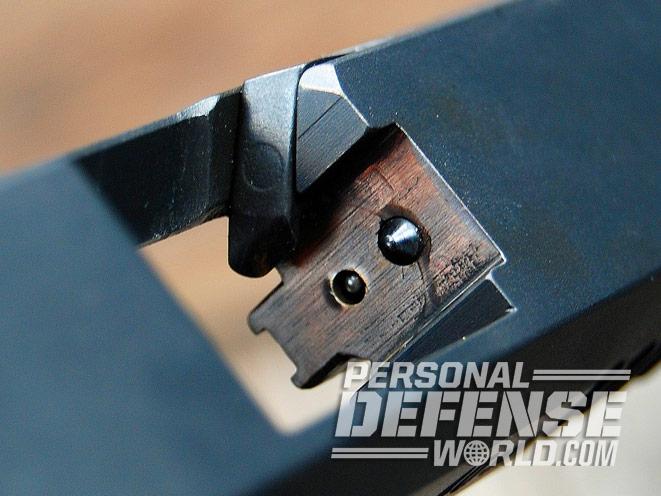My introduction to the Steyr family of pistols goes back to the M40-A1 I tested a couple years back, which left a good enough impression for me to jump at the chance to hit the range with the newest Steyr .40 S&W handgun model, the L40-A1, when it was announced in mid-2014. The “L” Series itself began with the L9-A1, but I was frankly more interested in the .40 caliber version.
It might help as a foundation to mention that Steyr’s pistol line is now centered around their “C,” “S,” and “M” models, all based on a striker-fired, polymer-framed, locked-breech, semi-auto design in various sizes, with the L models as the latest evolution of the pattern. The “S” is a compact in 9mm and .40 S&W, the “C” is a hybrid with a short barrel on a full-sized frame in 9mm, the “M” is a full-sized 9mm and .40 S&W carry pistol, and the new “L” is also a full-sized pistol with a 0.5-inch longer barrel and the same mag capacities and calibers as the “M” line.
Polymer .40
Advertisement — Continue Reading Below

Bearing a very distinct profile, the L40-A1 looks at first glance like it would have a markedly muzzle-heavy balance with its inordinate amount of frame material out front. Since most of that material (including the external accessory rail and internal recoil spring guide rod) is polymer however, there’s not as much weight there as you’d think, and the balance point actually remains back roughly where the trigger is, at least when the autopistol’s empty.
A good part of the pointability of the L40-A1 comes from the excellent ergonomics of the design’s grip dimensions, contours and angle. While Steyr pistols have not gone fashionably modern in joining the trend of removable backstraps to accommodate varying hand sizes, they do have one of the best grip-in-hand fits available for mid-sized mitts on the market. Made relatively thick to work around a 12-round, .40 caliber, Mec-Gar steel, double-column magazine, the finger-grooved grip section is flat-sided with horizontal serrations front and rear.

Normally, other pistols with similar side flats irritate me with their dead air space between the grip and my palm, but the Steyr’s don’t. Between the deep insweep at the top just under the slide for the web of the hand and the molded-in thumb recesses on both sides of the frame, the pistol just fits. (Quick note on those thumb scallops: They mate up well with where the thumb naturally rides during one-handed shooting, and they also function nicely if you buck the high-thumb tide and shoot two-handed with your inside thumb locked down under your outside thumb.) The gun’s ponderous muzzle outline is somewhat deceptive as the bore axis is really quite low, which benefits quick sight recovery between shots.
Advertisement — Continue Reading Below
RELATED STORY: Gun Review – Steyr Arms L9-A1 9mm
The steel slide wears what Steyr calls a durable “Mannox” finish, and while the polymer frame now says “SAI, Bessemer, Alabama” as opposed to “SAI, Cumming, Georgia” on the older M40-A1, the pistol is fully manufactured in Austria, as the slide stamps denote. L40-A1 controls are carried over from previous models, including the trigger-toggle drop safety, a small, unobtrusive-but-accessible stamped slide lock on the left side and a reversible steel mag release also initially set up on the left side.

Steyr’s engineers also retained the older takedown system, with a pivoting lever on the right side of the frame that works in tandem with the onboard key lock. Both interact together; the lever’s rear outward curve rides partially inside the lock’s front inward curve to prevent either from moving during routine handling or recoil. To swivel the takedown lever down for disassembly, the lock button has to be depressed far enough to clear it. In using either of the two keys included with the pistol to lock it, the lock button again has to be depressed, this time far enough to clear the lever and allow the key and button to be rotated one quarter turn to its locked position. Once there, the button stays depressed, the trigger is locked, the slide is not (if the pistol is cocked) and the lever can be swiveled down.
Advertisement — Continue Reading Below
Note that there are two distinct “conditions” involved with that lock. If the lock is engaged with the pistol cocked, it immobilizes the trigger, but the slide can be manually cycled (in loading or unloading the chamber, for instance). The takedown lever will swivel down, but since the trigger on the L40-A1 has to be pulled before the slide can be removed, you can’t get the slide off with the gun cocked and the lock activated. Conversely, if you pull the trigger first and then engage the lock, the slide assembly rides forward and off of the frame.

There are two reasons for going into such detail with the key lock. The first is because it’s so different from other makers’ key locks. The second is to point out that this interactive relationship between the lock button and takedown lever makes it extremely unlikely that this lock would ever activate itself without permission, since the lever mechanically blocks the button from turning unless deliberately depressed. Accidental activation’s a non-issue here. The Steyr system lets you lock the pistol either fully loaded or empty (if you choose to use it at all). Similarly, a nice (albeit not well-publicized) feature for LE duty use is an optional lock button that works with a standard handcuff key instead of the proprietary Steyr keys. If I were still in uniform and carrying this pistol, that’s the route I’d take, since I always had at least one handcuff key on me somewhere. There is no other external manual safety.
The L40-A1 also carries over a very roomy triggerguard for use with gloves, which is a positive, and the trapezoidal sights of earlier Steyr pistols, which some either love or hate.
Advertisement — Continue Reading Below
Rounds Downrange

At 25 yards off the bench with five loads in two bullet weights, the Steyr immediately told me two things—that the pyramidal sight picture is every bit as hard to work with for best accuracy today as it was the first time I tried it, and the low bore axis and grip angle work well together in keeping .40-caliber muzzle jump markedly reduced. This Steyr was the least snappy .40 I can recall shooting (double-taps without sight recovery averaged roughly 4 inches apart), and that’s a big plus for practical shot-to-shot speed in a defensive role.
The sight issue is a mixed bag. Trying to align three tiny “points” consistently (large front pyramid inside a larger “skeletonized” rear triangle) on a black bull is much harder for me than using more conventional sights, but I’m told with some work (involving more time and ammo than I had available for the test session) they can actually get to be quite intuitive and speedy in more practical “combat” or action game uses. I had to work at it to get the groups you see in the chart, and frankly admit I’d swap them off the pistol in favor of optional Trijicons right quick if I were keeping the sample. But the sights should not be a deal killer; others like them and you might, too.
Advertisement — Continue Reading Below
RELATED STORY: Steyr Arms Announces New Colors and Lower Pricing for Its Scout Rifle
Older pistols were not user serviceable for home sight replacements, incidentally, since the loaded-chamber indicator that runs through the slide also ran through the rear sight, but this feature has been redesigned on the L40-A1, so you can do your own sight replacement now if you choose.
The trigger is another mixed bag. Steyr has refined its Reset Action System and says the result is a crisper trigger, but the one on the L40-A1 sample felt slightly gritty to me and broke at 6.25 pounds. The upside there, for disciples of the short reset, is that this is an extremely short-reset trigger, and there’s no overtravel.
Advertisement — Continue Reading Below
The L40-A1 was well fitted (very tight frame-to-slide fit), decently accurate, thoroughly reliable, fast in recovery and an excellent “gripper.” For duty use it’s a very viable candidate, and if you can pull off a full-sized pistol for concealed carry, it’s equally suited to that as well.
For more information, visit http://www.steyrarms.com or call 205-417-8644.
